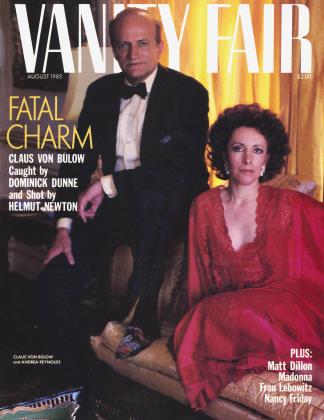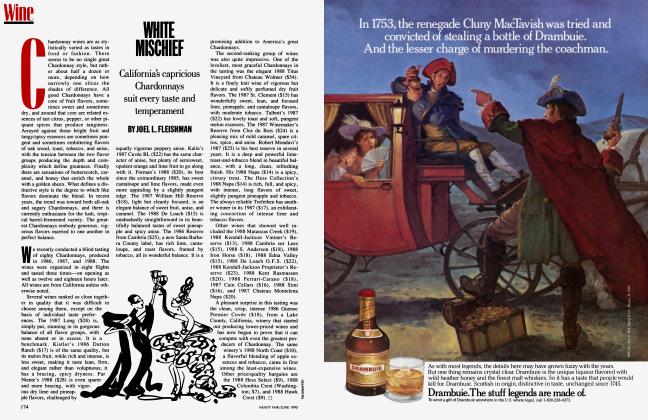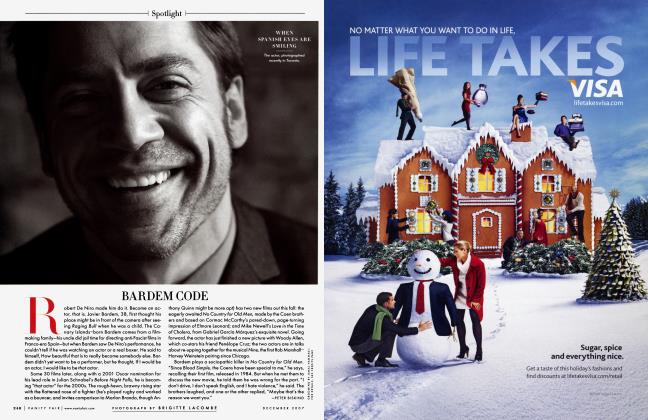Sign In to Your Account
Subscribers have complete access to the archive.
Sign In Not a Subscriber?Join NowVintage Point
JOEL L. FLEISHMAN
Sweet White German Wine for the Long Hot Summer
The wines of Germany are calming, especially during these dog days of summer. Nearly always vinified with at least a touch of sugar, and with less alcohol content than virtually any other true wines, German whites lift one's energy level without inducing hyperactivity.
There is a geographical explanation for the sweetness of German wines. Northern vineyards do not usually receive enough summer sun to produce grapes with a sugar level sufficient for wine with a flavor that will stand on its own. In the seventies, when Bordeaux produced superb wines in three vintages (1970, 1975, and 1978) and excellent ones in three others (1971, 1976, and 1979), Germany had only two first-class years (1971 and 1976). As many as eight out of ten vintages, therefore, may be steely wines of such acidic sharpness that few people would find them potable without some sweetening.
When the sun is intense for long enough and at the right time of year, the German vineyards produce magnificent wines. That is what occurred in 1983, which is why this August is so opportune a moment to sample German whites. If one can face the daunting prospect of sorting them out, that is. The German mania for classification is formidable.
German law demarcates eleven winegrowing regions {Anbaugebiete), 33 subdistricts (Bereiche), 150 subcommunities {Grosslagen), and some 2,600 actual vineyards (Einzellagen). The same law classifies German wines according to the amount of sugar in the grapes at harvest time—the higher the percentage of sugar, the higher the level of the classification. There are essentially three large categories—Deutscher Tafelwein, Qualitatswein bestimmter Anbaugebiete, and Qualitatswein mit Pradikat. Tafelwein is a table wine, and generally not exported. Liebfraumilch, a blend of wines from all over the Rhine region, is the best-known example of the second rung. It can be very pleasant, but is rarely distinctive.
It is in the third category that we find the best of the German wines, which are further divided into five subcategories according to the percentage of sugar in the unfermented grape juice—Kabinett, Spatlese, Auslese, Beerenauslese, and Trockenbeerenauslese. (A sixth, Eiswein, designates a seldom produced wine made from frozen grapes that is remarkably sweet and expensive.) The names refer to how late the grapes were left out in the summer or earlyautumn sun. There is not necessarily a relationship between the percentage of sugar before fermentation and that in the wine afterward, since most of the sugar—except in the very sweet, latestharvested grapes—will be converted into alcohol during fermentation. After fermentation, unfermented natural grape juice—required by law to be from the same vineyard as the wine itself—is added to the wines, causing their sweetness to increase gradually from the Kabinett level, with 1 to 2 percent sugar, up to the level of the great Trockenbeerenauslese dessert wines, which can have 10 to 30 percent sugar. Usually, the higher the sugar level, the higher the price.
The labels on the best German wines must identify the wine according to region, district, community, vineyard site, and quality. And of course the shipper's name will figure prominently on the label, too. As if that weren't enough utterly to confound the customer, each wine is tested by the state and given a quality-control number (Amtliche Prufungsnummer), on the basis of which the wine may be awarded a bronze, silver, or gold medal, which will appear on the neck or main label.
Finally, some shippers have taken to varying the color of the lead covering on the cork to signify quality and sweetness distinctions.
A Bordeaux lover choosing a wine needs only two pieces of information—the name of the chateau and the year. For Burgundies one needs three facts—shipper, commune, and year. But how is one to deal with Germany?
The only reasonable way to approach German wines is to start with those of a few* communities—made by reliable producers in the Moselle and Rheingau regions, for example—and compare them. Then slowly expand the vineyards with which you are familiar. The Moselles, in green bottles, tend to be softer, more delicate, more fragrant, and the Rheingaus tend to be crisp and vigorous. If inexpensive summer drinking is the objective, stick with the less sweet Kabinett wines. In the Moselle region, a few of the betterknown vineyards are Bemkasteler Doktor, Piesporter Goldtropfchen, Graacher Himmelreich, and Wehlener Sonnenuhr, shipped by J. J. Priim, S. A. Priim, Deinhard, Kesselstatt, or Thanisch. Among the Rheingaus, try a Schloss Johannisberger, Steinberger, Eltviller, Rauenthaler, or Hochheimer, shipped by Deinhard, Schloss Johannisberg, Staatsweingiiter Eltville, Schloss Eltz, Hessisches, von Simmern, or von Schonbom-Wiesentheid.
If this adds information overload to your heat prostration, simply tell your wine merchant to select a range of inexpensive 1983 German Kabinett wines for you, perhaps those shipped by J. J. Priim, and let it go at that.
 View Full Issue
View Full Issue


















Subscribers have complete access to the archive.
Sign In Not a Subscriber?Join Now